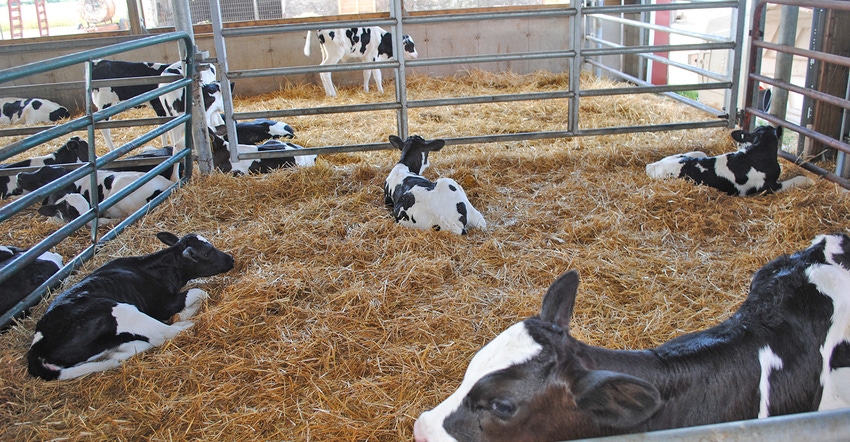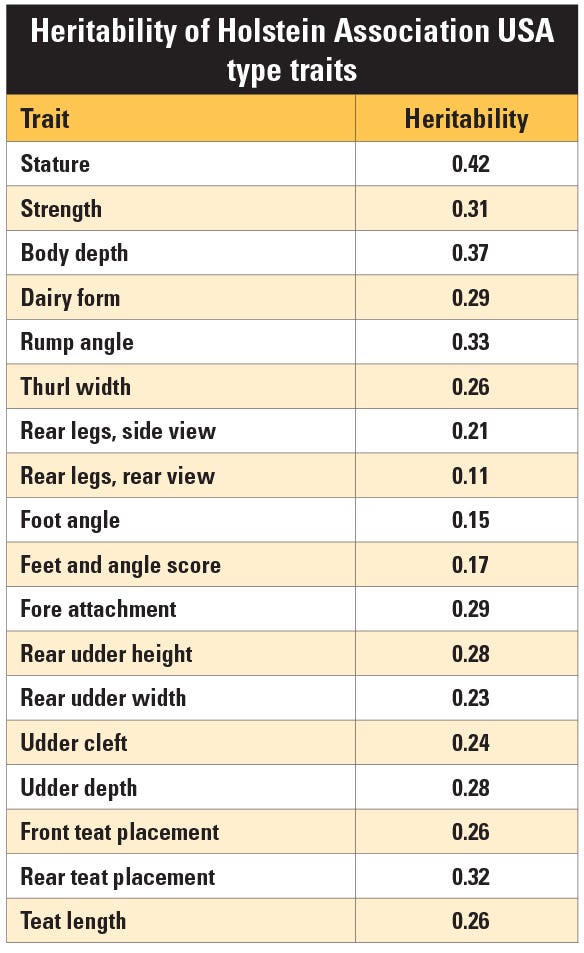May 19, 2017

By Amanda Young
Today’s science allows us to determine livestock’s genotype, or actual genes for a given trait. These traits are expressed as phenotypes, or physical characteristics you can observe or measure on an individual animal — such as weaning or yearling weight.
Phenotypes are expressed as one of two types of traits: qualitative or quantitative. Qualitative traits are a “yes or no” trait such as gender or horns. Usually, a single gene or small group of genes control qualitative traits.
Quantitative traits are controlled by many genes, with each gene having an effect on the overall phenotype for that trait. An example of a quantitative trait is fertility. These traits can be significantly influenced by the animal’s environment.
Genetic progress
The primary goal of most dairy producers is to maximize the profitability of their herd. One way to achieve this goal is to have genetically superior cattle.
Four factors influence genetic change:
• Accuracy of selection is the ability to select animals that truly are genetically superior for a given trait.
• Selection intensity is a measure of how “choosy” breeders are in deciding which individuals are selected.
• Genetic variation indicates the relative differences among animals within a population for a trait under selection.
• Generation interval is the average age of a parent when all offspring are born.
Genetic change is predicted using the following equation:
(accuracy of selection x selection intensity x genetic variation) / generation interval = genetic change
When deciding what traits to improve in your dairy herd, one must consider the heritability and correlations of each trait of interest. Heritability is the proportion of variation in a trait due to genetic factors, which are measured in numbers ranging from 0.0 to 1.0, with higher numbers being more heritable. The more heritable the trait, the faster genetic progress can be made by selecting for that trait.
Correlated responses mean that selecting for one trait may result in genetic changes in other traits. Correlations may be positive or negative between traits. Highly correlated traits are traits that are regulated by a large portion of the same genes.

Here's an explanation of genetic change trade-offs:
• Accuracy vs. generation interval. To wait for more progeny records to enhance accuracy would increase the generation interval. A strategy is to choose the better young sires with the highest accuracies and use for only one year.
• Accuracy vs. intensity. To wait for more progeny records to enhance accuracy for only a few sires would decrease the intensity of selection (i.e., the percentage selected). One solution is to test more sires that have fewer progeny records.
• Intensity vs. generation interval. Being too “choosy” usually results in a longer generation interval. However, the real trade-off is between selecting females vs. males (e.g., a lower replacement rate dictates that animals remain longer in the population).
• Intensity vs. risk. A problem may exist if very few sires are used that have low accuracies, whereby their breeding values turn out to be less than what was initially reported.
Producers can use numerous low- or high-tech genetic methods to improve a variety of different traits in their herds. However, understanding the basics of the four factors that influence genetic change and the trade-offs among them can help any dairy producer work efficiently toward the genetic change desired.
Young is the Dodge County Extension dairy and livestock agent.
You May Also Like




